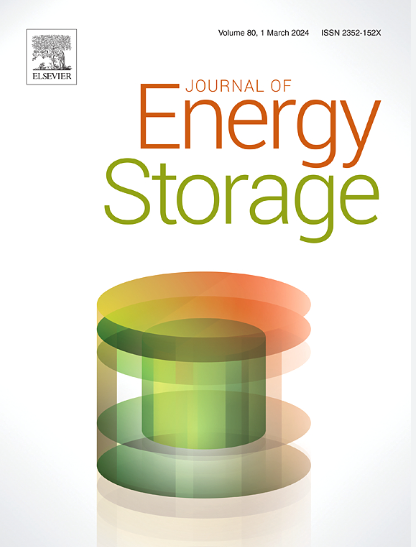A two-layer full data-driven model for state of health estimation of lithium-ion batteries based on MKRVM-ELM hybrid algorithm with ant-lion optimization
IF 8.9
2区 工程技术
Q1 ENERGY & FUELS
引用次数: 0
Abstract
State of health (SOH) is one of the most important indicators for the lithium-ion batteries' security, reliability and failure, therefore SOH estimation attracts close attention spontaneously. In this paper, a two-layer full data-driven SOH estimation model based on hybrid algorithm composed of multi-kernel relevance vector machine and extreme learning machine optimized with ant-lion optimization (ALO-MKRVM-ELM) is presented. In the model, a pre-estimation layer and an error compensation layer are assembled organically, which use MKRVM algorithm and ELM algorithm respectively. Meanwhile, to solve the problem of tedious debugging for parameters in MKRVM and ELM, ALO algorithm is introduced properly. In addition, considering both of estimation accuracy and calculation complexity, the feature factors for SOH estimation, which can be extracted from the battery's practical operation process, are elaborately selected through correlation analysis also. Finally, the performance comparison against various estimation models was carried out by using two groups of aging experiment datasets from Center for Advanced Life Cycle Engineering (CACLE) and Intelligent Power Laboratory (iPower-Lab) at our university, where CS2-type and ternary lithium-ion batteries were tested respectively, and three statistical evaluation indexes, i.e., the MAE, RMSE, and R2, are applied to assess the estimation results numerically. The experimental results indicate that both accuracy and robustness of the proposed model have been improved significantly.
基于MKRVM-ELM混合算法的两层全数据驱动锂离子电池健康状态估计模型
健康状态(SOH)是衡量锂离子电池安全性、可靠性和失效的重要指标之一,因此SOH的估计自然受到人们的密切关注。提出了一种基于多核相关向量机和蚁狮优化极值学习机混合算法的两层全数据驱动SOH估计模型(ALO-MKRVM-ELM)。该模型将预估计层和误差补偿层有机组合,分别采用MKRVM算法和ELM算法。同时,为了解决MKRVM和ELM中参数调试繁琐的问题,适当地引入了ALO算法。此外,考虑到估算精度和计算复杂度,还通过相关分析对可从电池实际运行过程中提取的SOH估算特征因子进行了精心选择。最后,利用我校先进生命周期工程中心(CACLE)和智能电源实验室(iPower-Lab)的两组老化实验数据集,分别对cs2型和三元锂离子电池进行测试,并采用MAE、RMSE和R2 3个统计评价指标对估计结果进行数值评价,与各种估计模型进行性能比较。实验结果表明,该模型的精度和鲁棒性都得到了显著提高。
本文章由计算机程序翻译,如有差异,请以英文原文为准。
求助全文
约1分钟内获得全文
求助全文
来源期刊

Journal of energy storage
Energy-Renewable Energy, Sustainability and the Environment
CiteScore
11.80
自引率
24.50%
发文量
2262
审稿时长
69 days
期刊介绍:
Journal of energy storage focusses on all aspects of energy storage, in particular systems integration, electric grid integration, modelling and analysis, novel energy storage technologies, sizing and management strategies, business models for operation of storage systems and energy storage developments worldwide.
 求助内容:
求助内容: 应助结果提醒方式:
应助结果提醒方式:


